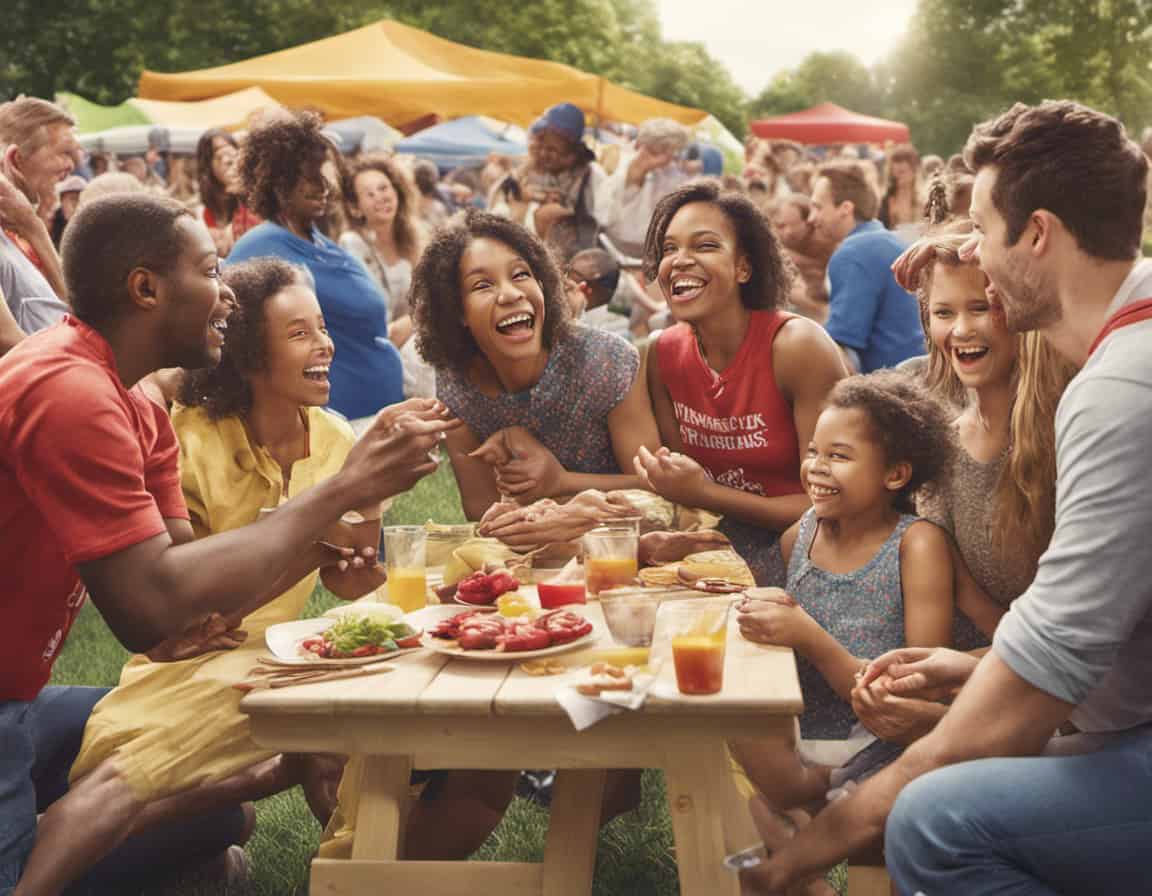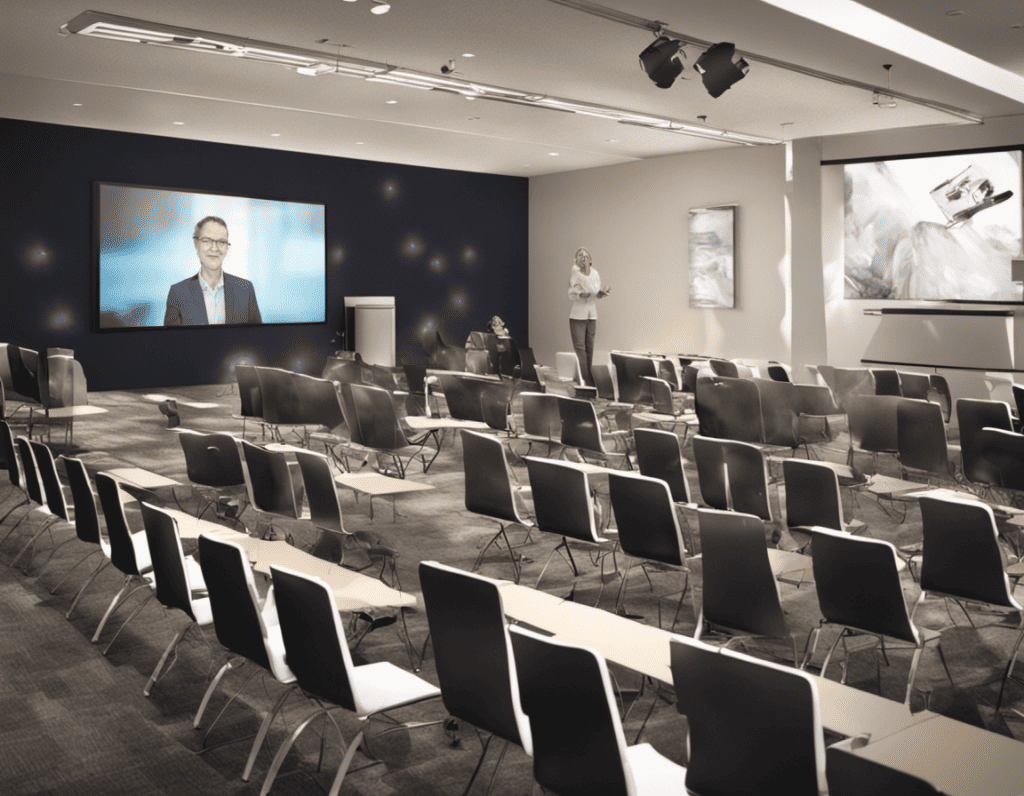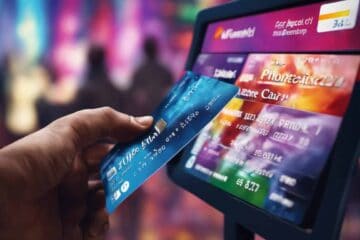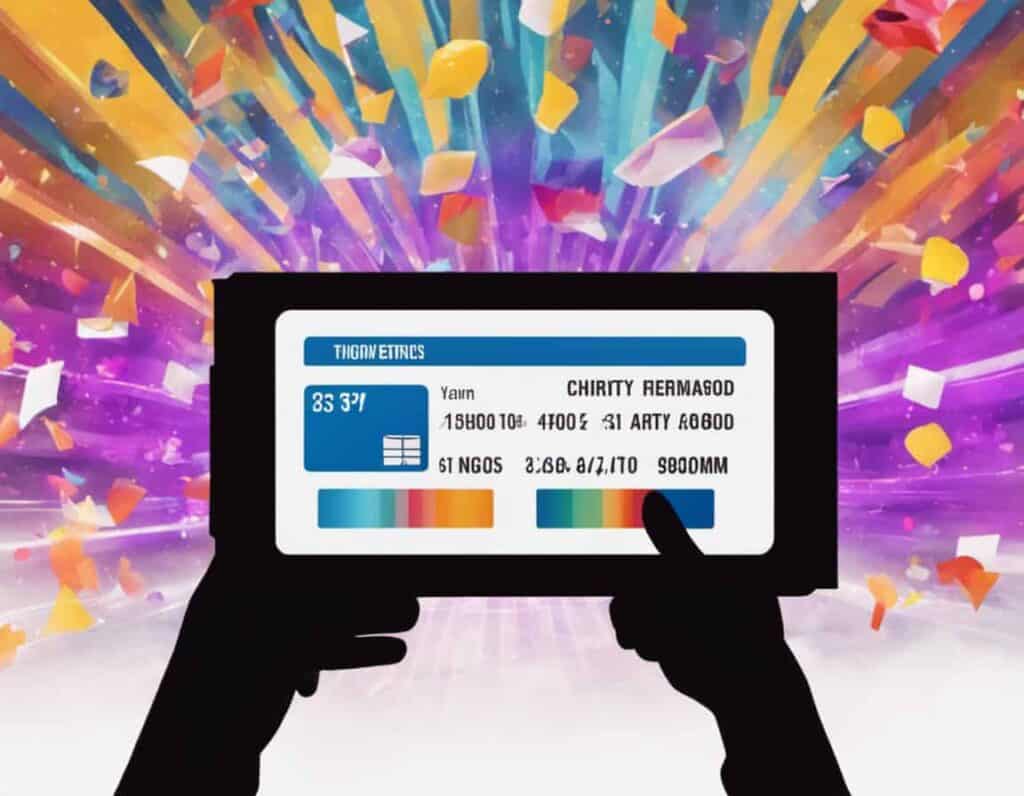When it comes to making a real difference, there’s nothing quite as powerful as a community coming together for a cause. This is especially true when families join forces in fundraising efforts. In the realm of non-profit organizations, family-friendly fundraising isn’t just about collecting donations; it’s about building a community legacy that resonates across generations.
But how do you design events that are enjoyable for all family members, support your organization’s mission, and leave a lasting impact?
Let’s dive into the world of family-friendly fundraising strategies, where fun and creativity are the keys to successful money-raising events.
Understanding Family-Friendly Fundraising
Have you ever been to a place where the sound of laughter is as abundant as the air we breathe? Where the joy of children is as bright as the sun in the sky, and the commitment of adults is as deep as the ocean? That’s the magical world of family or kid-friendly fundraising.
It’s like a big, warm, community hug, where every person, big or small, feels they belong and are part of something truly special.
In family-friendly fundraising, we’re not just collecting donations; we’re weaving a rich tapestry of shared experiences and memories. These events are special because they welcome everyone – from the tiny toddlers taking their first steps to the wise grandparents who’ve seen the world change.
It’s here that the journey of giving transcends mere transactions and transforms into building a vibrant community, united by a common cause.
Imagine, for a moment, a grand, formal event – everyone in their finest attire, a sea of suits and gowns. These events have their charm, no doubt, but sometimes, they can feel a bit distant from the warm, inclusive embrace of community spirit. This is where family and kid-friendly fundraising dances into the picture, with open arms and a welcoming smile. It’s about replacing stiff formalities with the freedom to be oneself, making the world of giving and support accessible to everyone, irrespective of age or background.
Now, let’s pause and think – when families come together in the spirit of giving, what are we really creating? We’re nurturing the philanthropists of tomorrow, sowing seeds of compassion and kindness in young hearts.
The impact of this is multi-layered, like the petals of a blooming flower.
- Planting Seeds for the Future: When families engage in these events, we’re not just looking at the present. We’re cultivating a future where giving and supporting become second nature.
- Weaving a Tapestry of Unity: Family-friendly events are like the threads that bind the community fabric, strengthening the ties that bind us to each other and our shared goals.
- Spreading the Word with a Smile: Happy families are the best storytellers of your cause. Their positive experiences become stories that travel far and wide, bringing more people into the fold.
- Promoting Empathy and Learning: Kid-friendly events spark conversations and interactions that nurture empathy and understanding. They encourage a culture of kindness and support, fostering collective consciousness.
- Educational and Memorable: These events offer valuable learning experiences, teaching children and teenagers about teamwork, empathy, and civic responsibility. They create cherished memories and family traditions, keeping everyone connected to your cause.
- Building Community Resilience: When families unite for a cause, it strengthens the community’s resilience. They realize they have a support network, enhancing the community’s ability to face challenges.
In essence, family-friendly fundraising is about much more than raising money. It’s about nurturing hearts, building bonds, and creating a legacy of giving that will flourish for generations to come.
It’s a celebration of community, a testament to the power of togetherness, and a journey of making a difference, one family at a time.
10 Fun and Creative Ways to Raise Money Family-Friendly Fundraising Ideas
1. Community Carnival
A community carnival brings the magic of a fair right to your doorstep. It’s a delightful blend of games, food, and entertainment, making it one of the most irresistible fundraising ideas for families.
The variety of activities ensures there’s something for everyone, fostering a festive atmosphere.
Carnivals also encourage community participation, enhancing the sense of belonging. Plus, they offer numerous opportunities for fundraising through ticket sales, food stands, and sponsored games.
- Diverse Attractions: Include a range of games and activities to cater to different age groups and interests.
- Local Partnerships: Collaborate with local businesses for sponsorships or to run stalls.
- Safety Measures: Prioritize safety with well-planned layouts and trained volunteers.
- Marketing Magic: Use eye-catching posters and social media campaigns to spread the word.
- Volunteer Engagement: Recruit and organize volunteers effectively for smooth event operation.
A community carnival is not just a fundraiser; it’s a celebration of togetherness and joy.
2. Family Fun Run
Family Fun Runs blend health, happiness, and helping others. Such fundraising ideas appeal to all ages and fitness levels, making them inclusive.
Participants often dress up or run in teams, adding an element of fun competition. The event fosters community spirit while promoting a healthy lifestyle. It also offers great opportunities for sponsorship and pledges per kilometer or mile.
- Route Planning: Ensure the route is safe, accessible, and clearly marked.
- Sponsorship Opportunities: Seek local businesses to sponsor the event or parts of the route.
- Registration Process: Create an easy online registration system to encourage participation.
- Community Involvement: Encourage local schools and clubs to participate.
- Post-Run Activities: Organize post-run activities or celebrations to maintain the festive spirit.
Fun Runs are not just about the distance covered, but the smiles and memories created along the way.
3. Themed Bake Sale
A themed bake sale adds a delicious twist to fundraising. It’s a perfect platform for families to showcase their baking skills and creativity.
Themes like holiday treats or cultural specialties spark interest and excitement. The aroma of freshly baked goods creates an inviting atmosphere.
Plus, this fundraising idea is a great way to engage the local community in a sweet and savory way.
- Creative Themes: Choose a fun and engaging theme to inspire bakers.
- Location Matters: Select a high-traffic area for maximum visibility.
- Quality Control: Ensure all items are of good quality and properly labeled for allergens.
- Pricing Strategy: Price items reasonably to encourage more sales.
- Promotion: Use social media and local networks to advertise the sale.
A bake sale is more than just treats; it’s a recipe for community engagement and sweet success.
4. Outdoor Movie Night
Hosting an outdoor movie night is like bringing the magic of cinema under the stars. It’s one of the perfect fundraising ideas for families to relax and bond over a beloved film.
The informal setting makes it more accessible and comfortable. You can raise funds through ticket sales, concessions, and themed merchandise. It’s also a great way to utilize local spaces like parks or school fields.
- Movie Selection: Choose a family-friendly or kid-friendly film that appeals to a broad audience.
- Comfortable Seating: Encourage attendees to bring blankets or offer rental chairs.
- Concession Stand: Sell snacks and drinks for an authentic movie experience.
- Technical Setup: Ensure a high-quality screen and sound system.
- Weather Plan: Have a backup plan in case of inclement weather.
An outdoor movie night is a perfect blend of entertainment and community spirit under the night sky.
5. Art & Craft Workshop
Art and craft workshops spark creativity and togetherness. Such fundraising ideas provide a platform for all ages to learn new skills and express themselves. The hands-on experience is both engaging and therapeutic.
Selling the crafted items can raise additional funds. It’s also a great idea to showcase local artists and crafters.
- Diverse Workshops: Offer a variety of workshop fundraising ideas catering to different skill levels and interests.
- Expert Instructors: Collaborate with local artists or crafters to lead the workshops.
- Materials Management: Ensure a good supply of materials and tools for participants.
- Venue Suitability: Choose a venue that is spacious and conducive to creative activities.
- Showcase and Sell: Organize a display area where participants can showcase and sell their ideas and creations.
Art and craft workshops are not just about creating objects; they’re about crafting community connections.
6. Storytelling Evening
A storytelling evening is like weaving a tapestry of tales under the stars. It’s an enchanting experience for all ages, combining the art of storytelling with the magic of imagination.
Local storytellers or community members can share tales, fostering a sense of wonder and community. It’s an intimate event that can be themed around the organization’s cause, deepening the connection to your mission.
Fundraising ideas in such events can be through entry tickets or donations for special story requests.
- Engaging Storytellers: Invite captivating storytellers who can connect with a diverse audience.
- Cozy Ambiance: Create a warm, inviting setting with comfortable seating and gentle lighting.
- Interactive Elements: Include audience participation segments for added engagement.
- Thematic Consistency: Align stories with the theme of your cause to reinforce the message.
- Promotion: Market the event through local schools, libraries, and social media.
A storytelling evening is not just about the stories told; it’s about the memories and connections forged.
7. Charity Sports Tournament
Sports tournaments bring out the spirit of friendly competition and teamwork. These fundraising ideas are great for all ages, whether participants or spectators.
Hosting a football, basketball, or even a frisbee tournament can draw significant community interest. It encourages healthy activity while fostering team spirit.
Funds can be raised through team registration fees, sponsorships, and selling refreshments.
- Variety of Sports: Offer different sports to cater to a wide range of interests.
- Community Engagement: Get local sports clubs and schools involved.
- Sponsorships: Attract local businesses as sponsors for teams or the event.
- Family-Friendly Environment: Ensure the venue is safe and enjoyable for families.
- Awards Ceremony: Host a simple ceremony post-tournament to acknowledge participants.
Charity sports tournaments are more than games; they are celebrations of community spirit and health.
8. DIY Craft Fair
A DIY Craft Fair is a vibrant showcase of creativity and craftsmanship. It invites families to create, display, and sell their handmade items. The fair becomes a hub of artistic expression, connecting local artisans with the community.
It’s an excellent opportunity for people to learn about different crafts and purchase unique items.
Funds can be raised through stall fees, entry tickets, and a percentage of sales.
- Diverse Range of Crafts: Encourage a wide variety of crafts to attract different interests.
- Workshop Sessions: Include live DIY workshops for attendees to learn new skills.
- Local Artisan Participation: Invite local artisans to participate and demonstrate their crafts.
- Strategic Location: Choose a location that’s easily accessible and visible.
- Marketing and Promotion: Use online platforms and community networks to promote the event.
A DIY Craft Fair isn’t just a marketplace; it’s a celebration of creativity and community talent.
9. Charity Auction
A charity auction is an exciting way to raise funds while offering something valuable and unique to the community.
It can be a mix of silent and live auctions, featuring items donated by local businesses or community members. The thrill of bidding in a friendly environment adds to the enjoyment.
Auctions can include experiences, artwork, or even services, catering to a wide range of interests. This type of event encourages community involvement and generates significant funds.
- Quality Items: Ensure the items or experiences auctioned are desirable and of good quality.
- Efficient Organization: Plan the auction logistics carefully for a smooth experience.
- Engaging Auctioneer: An enthusiastic auctioneer can significantly enhance the experience.
- Online Option: Consider an online component for wider participation.
- Promotion: Advertise well in advance to generate interest and excitement.
A charity auction isn’t just about the items sold; it’s an exciting event that brings people together for a cause.
10. Neighborhood Scavenger Hunt
A neighborhood scavenger hunt brings the community together through playful interaction, promoting teamwork and exploration. Families can participate together, making it a bonding experience.
The hunt can be themed around your cause, making it educational as well as enjoyable.
Funds can be raised through participation fees and local business sponsorships.
- Creative Clues: Design clues that are challenging yet fun for all age groups.
- Community Involvement: Get local businesses involved as part of the scavenger locations.
- Safety First: Ensure the route and activities are safe for all participants.
- Prizes and Incentives: Offer small prizes or incentives to encourage participation.
- Effective Communication: Provide clear instructions and support throughout the event.
A neighborhood scavenger hunt is much more than a game; it’s a journey of discovery and community bonding.
Moving from event ideas to planning, let’s explore key tips for successful family-friendly fundraising events. These elements are crucial for turning your ideas into impactful events.

A. Planning Your Family-Friendly Fundraising Event
Planning is the compass that guides your fundraising event towards success. It’s about balancing the joyous essence of family engagement with the practicalities of achieving your fundraising goals.
Key Factors to Consider When Planning
- Clear Objectives: Define what you want to achieve, be it raising funds, community engagement, or awareness.
- Audience Demographics: Understand who will attend – families, children of various ages, and community members.
- Event Timing: Choose a date and time that’s convenient for families, avoiding school nights or busy weekends.
- Venue Selection: Pick a venue that’s accessible, safe, and suitable for families.
- Activity Choices: Plan activities that are enjoyable, inclusive, and resonate with your audience.
In the digital age, utilize event management software for seamless planning and social media platforms for effective promotion. These tools simplify organization and boost your event’s reach.
Actionable Tips for Effective Event Planning
- Budgeting with Insight: Prioritize spending on elements that enhance the family experience.
- Engaging Marketing Strategy: Use social media, local media, and community networks to promote your event.
- Inclusive Programming: Ensure activities are suitable and enjoyable for all age groups.
- Volunteer Coordination: Recruit and train volunteers for various roles, ensuring a smooth event.
- Safety and Accessibility: Ensure the event is inclusive and safe for all, including those with disabilities.
- Sustainable Practices: Incorporate eco-friendly practices in your event planning.
- Feedback Mechanisms: Set up ways to gather feedback for continuous improvement.
Remember, the heart of a successful family or kid-friendly fundraising event lies in meticulous planning that harmonizes fun, community spirit, and your noble cause.
B. Making Your Family-Friendly Fundraising Event Inclusive and Accessible
Creating an inclusive and accessible event is like opening your arms wide to welcome everyone in the community. It’s about celebrating diversity and ensuring that every family, regardless of their background or abilities, feels valued and involved.
Key Factors to Consider for Inclusivity and Accessibility
- Physical Accessibility: Ensure the venue is wheelchair accessible and navigable for those with mobility challenges.
- Communication Accessibility: Provide sign language interpreters and written materials in multiple formats.
- Financial Accessibility: Offer a range of ticket prices or free entry for those who cannot afford it.
- Cultural Sensitivity: Be mindful of cultural differences, whether in food, music, or event themes.
- Family-Friendly Facilities: Include facilities like nursing areas, child-friendly restrooms, and quiet zones for sensory-sensitive individuals.
Utilize apps and websites to provide information in various languages and formats. Also, consider using technology like hearing loops or augmented reality for enhanced accessibility.
Actionable Tips for Creating an Inclusive and Accessible Event
- Venue Assessment: Conduct a thorough assessment of the venue for accessibility barriers.
- Diverse Entertainment: Include entertainment that reflects various cultures and interests.
- Inclusive Marketing: Use promotional materials that represent diverse community members.
- Staff and Volunteer Training: Train staff and volunteers on inclusivity and accessibility practices.
- Feedback from Diverse Groups: Consult with different community groups during the planning stage.
- Emergency Preparedness: Ensure that emergency plans are inclusive of all attendees’ needs.
- Continuous Improvement: Gather post-event feedback to improve inclusivity in future events.
Embracing inclusivity and accessibility in your family or kid-friendly fundraising event is a beautiful way to celebrate the unique tapestry of your community and make every member feel at home.
C. Storytelling and Emotional Connection in Family-Friendly Fundraising
Storytelling is the golden thread that connects hearts in fundraising events. It transforms statistics into stories, numbers into narratives, making the cause resonate on a deeply personal level with attendees.
Key Factors to Consider for Effective Storytelling
- Authenticity: Choose genuine stories and reflect the true impact of your cause.
- Diversity of Stories: Include a range of stories to represent the different people and communities you serve.
- Audience Engagement: Craft stories in a way that involves and engages your audience emotionally.
- Appropriate Medium: Select the best medium to convey your stories, whether it’s through speeches, videos, or live performances.
- Sensitivity: Handle all stories with care and respect, especially those involving vulnerable subjects.
Incorporate multimedia presentations or storytelling apps to bring stories to life. Utilize social media platforms to share stories before, during, and after the event for wider impact.
Actionable Tips for Incorporating Storytelling
- Real People, Real Stories: Feature stories from individuals directly impacted by your cause.
- Multimedia Integration: Use videos and images to add depth to the stories shared.
- Interactive Storytelling Spaces: Set up areas like photo booths where attendees can engage with stories.
- Live Testimonials: Invite individuals to share their stories in person, if they are comfortable.
- Story Training for Volunteers: Train volunteers and staff on how to effectively share and present stories.
- Story Follow-Ups: Update attendees on the progress or resolution of the stories shared.
- Feedback and Story Collection: Encourage attendees to share their own stories and feedback.
Through the art of storytelling, your fundraising event becomes a tapestry of meaningful connections, leaving a lasting impact on both the attendees and the cause.
D. Leveraging Digital Platforms in Family-Friendly Fundraising
In the tapestry of modern fundraising, digital platforms are vibrant threads that connect your event to the wider world. They not only amplify your message but also create a virtual bridge, bringing your cause to the fingertips of a global audience.
Key Factors to Consider When Leveraging Digital Platforms
- Platform Selection: Choose the right platforms based on where your target audience is most active.
- Content Variety: Create a mix of content types, including images, videos, and live updates.
- Engagement Strategy: Develop a plan for regular engagement and interaction with your audience.
- Consistency: Maintain a consistent presence online with regular updates and timely responses.
- Analytics and Feedback: Use analytics tools to track engagement and gather feedback for improvement.
Embrace tools like social media management software for scheduling and analytics, and live streaming services to broadcast your events in real-time. These tools simplify managing your digital presence and enhance audience engagement.
Actionable Tips for Maximizing Digital Engagement
- Engaging Social Media Campaigns: Launch creative and interactive social media campaigns to build excitement.
- Influencer Collaboration: Partner with local influencers or community figures to widen your reach.
- Interactive Live Streaming: Host live streams with interactive elements like Q&A sessions.
- Hashtag Creation: Create unique and memorable hashtags to track and promote your event.
- User-Generated Content: Encourage attendees to share their experiences and tag your event.
- Regular Updates and Stories: Keep your audience engaged with regular updates and behind-the-scenes stories.
- Virtual Participation Options: Offer virtual participation opportunities, like online auctions or webinars.
By skillfully leveraging digital platforms, your family or kid-friendly fundraising event transcends physical boundaries, weaving a wider web of community and support.
E. Building Long-term Relationships with Attendees
Cultivating long-term relationships with attendees is like planting a garden of community support that blossoms year after year. It transforms one-time attendees into lifelong supporters, nurturing a deep, enduring connection with your cause.
Key Factors to Consider When Building Long-term Relationships
- Personalized Communication: Tailor your communication to reflect the individual’s interests and level of involvement.
- Feedback Mechanisms: Implement ways to gather and respond to feedback, showing that you value their opinions.
- Consistent Engagement: Keep your supporters engaged with regular updates and opportunities to get involved.
- Recognition and Appreciation: Show genuine appreciation for their support in various forms.
- Growth Opportunities: Offer opportunities for attendees to grow with your cause, such as increased responsibility or leadership roles.
Utilize Customer Relationship Management (CRM) systems to manage and personalize your interactions. Leverage email marketing tools and social media platforms for regular communication and updates.
Actionable Tips for Fostering Lasting Relationships
- Personalized Thank-You Notes: Send customized thank-you messages post-event to show your appreciation.
- Regular Updates on Impact: Share how their contributions are making a difference through newsletters or social media.
- Invitations to Future Events: Keep your supporters in the loop about upcoming events and initiatives.
- Volunteer Appreciation Events: Host special events or gatherings to honor and appreciate your volunteers.
- Surveys and Feedback Forms: Conduct surveys to understand their experience and gather suggestions.
- Community Building Activities: Organize community activities or groups to foster a sense of belonging.
- Ongoing Support Options: Provide clear and easy ways for ongoing donations or volunteer sign-ups.
Building long-term relationships with your attendees turns fleeting encounters into a cherished community, ensuring your cause thrives through shared dedication and passion.

Final Thoughts | Crafting Lasting Bonds Through Family-Friendly Fundraising
At the core of family-friendly fundraising lies a mission beyond collecting donations. It’s about creating a vibrant community where every moment, story, and experience contributes to a lasting legacy.
Whether organizing your first fundraiser or elevating existing initiatives, prioritize creativity, inclusivity, and community spirit. These are the pillars of a successful event and building an engaged community.
Also, consider the value of fundraising management software to streamline planning and enhance engagement. It’s your digital ally, empowering you to focus on uniting people for a heartfelt cause.
Turn your vision into reality and build a cherished community legacy.











